How to Have Good Table Manners
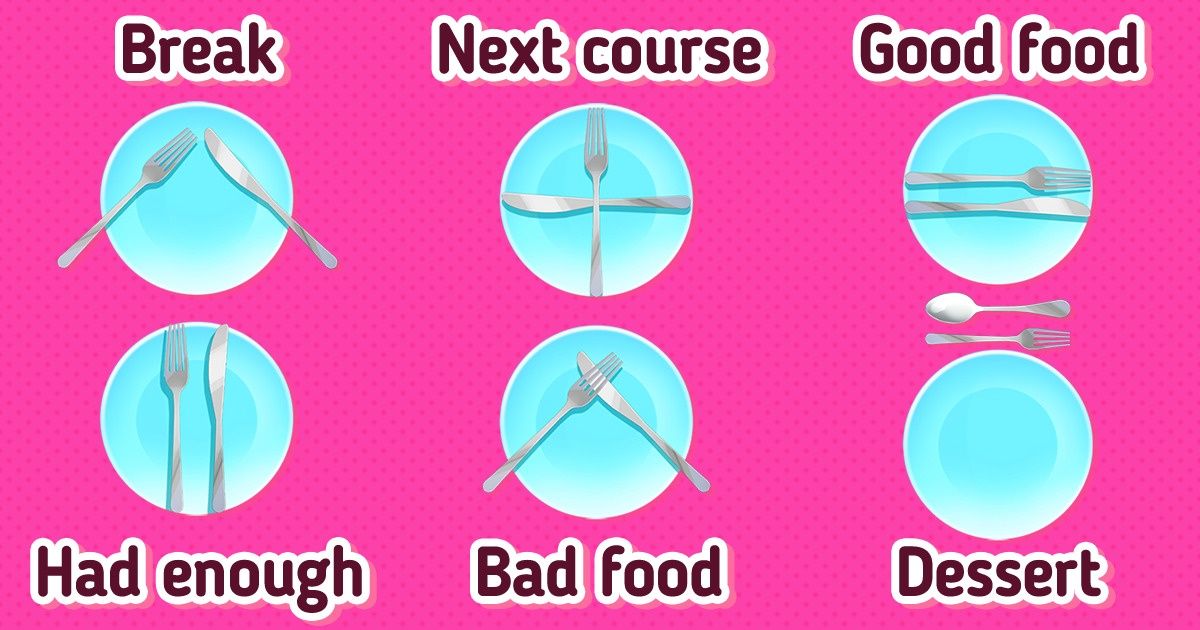
Table manners are often understood as the rules of etiquette that someone should follow while eating. These can vary from country to country, so it’s important to get acquainted with local rules if you’re travelling, for example.
Other than that, 5-Minute Crafts compiled some of the most common rules that you’ll find in Western countries.
A. Upon arriving
One cannot arrive at a dinner party and simply take a seat and expect to be served. There are a few rules they need to follow before that. Most often it’s required to bring a gift to the party. Then, one might need carry out some of the following steps.
1. Find your seat.
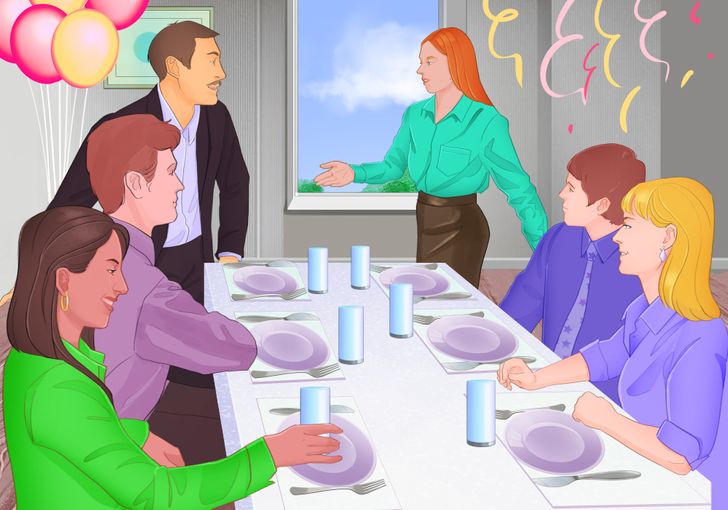
Place cards tell guests where to sit. They’re often used at dinners with more than 6 guests, to avoid delays and confusion. If there are no place cards, the host will tell his or her guests where to sit. Alternatively, he or she may request that they determine where to sit on their own.
2. Mind your posture.
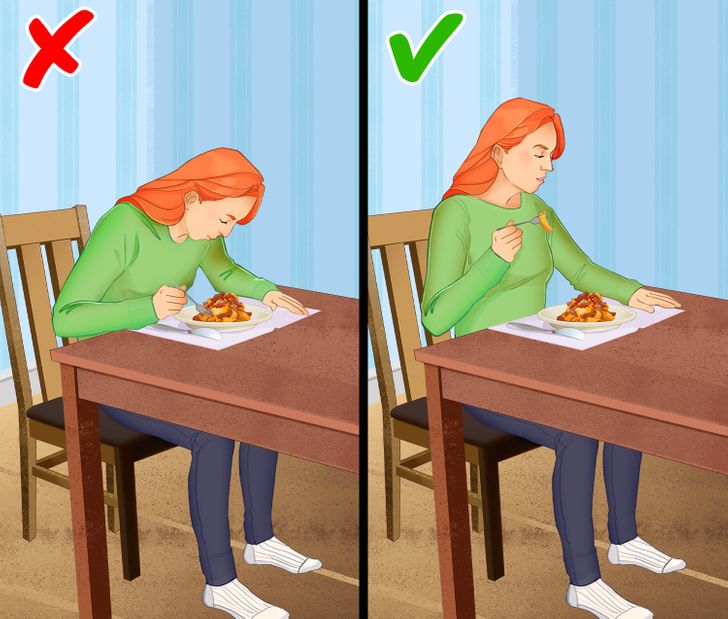
Good posture is essential for you to look elegant while eating so it’s important to be mindful of it throughout the whole dinner. It all starts with your feet, which should rest on the floor, flatly and well-grounded at all times. You should also make sure to keep your torso upright. Keeping both hands on the table can be helpful in maintaining your posture.
⚠️ Always keep in mind that the food should come to your mouth instead of the other way around. Don’t slouch and bring the utensils to your mouth.
B. The napkin
A napkin is used at mealtimes to wipe your lips or fingers and to protect your clothing. Napkins can be folded in simple or complicated ways. Most often, if they’re customized in such a way that they’ll be placed in the center of the setting but also sometimes on the side plate. If they’re folded in a simple way they will most likely be found on the side plate.
1. Before any course arrives
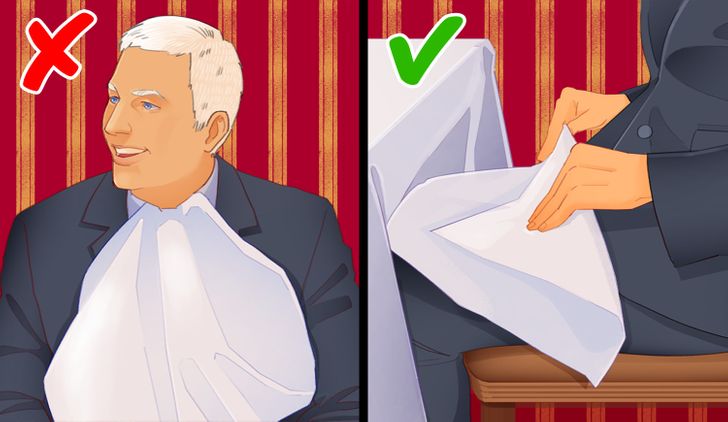
After you’re seated, wait for your host or guest of honor to pick up their napkin and place it on their lap. Once that’s done you can do the same. You don’t need to fully open a large napkin, just fold it in half. If it’s a smaller luncheon napkin then it’s better to open it fully.
⛔️ Never flap your napkin like a flag before placing it in your lap even if you see other people doing that. Also, don’t tuck it into your shirt like a bib.
2. During the meal
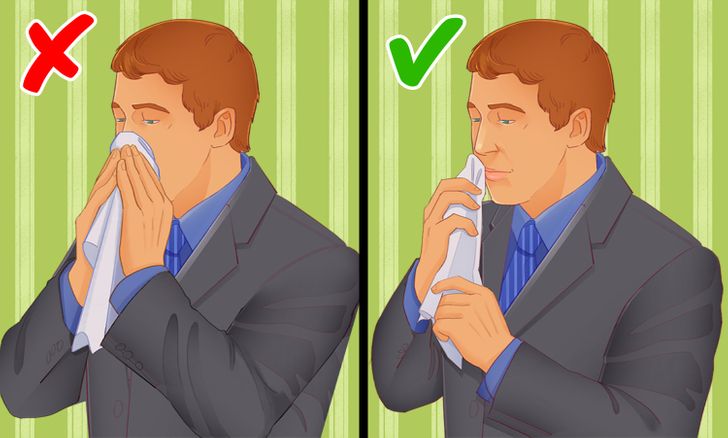
The napkin is supposed to remain on your lap throughout the entire meal and will be used to gently blot your mouth when needed. If you need to leave the table during the meal, simply place your napkin on your chair after excusing yourself from the table.
⛔️ Under no circumstance should you refold your napkin, wad it up, or place it on your plate. Also, never use a napkin to wipe off lipstick or to blow your nose!
3. When you’re done
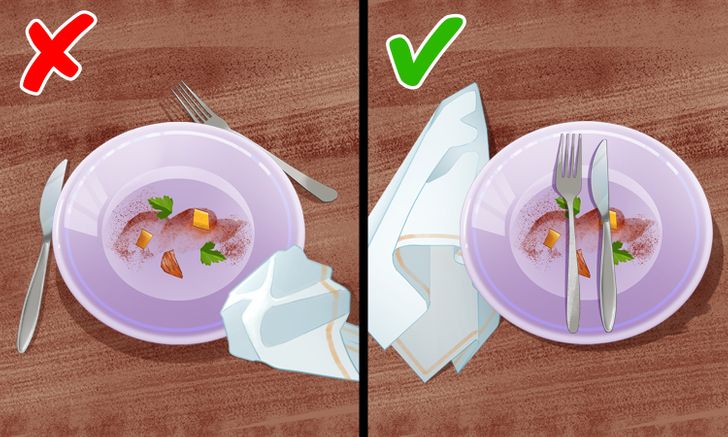
After the meal is over, wait for the host to signal the end of the meal. He or she will do so by placing their napkin on the table to the left of their dinner plate, with no soiled areas showing. You should do the same afterward.
⛔️ Again, never refold your napkin, wad it up, or place it on your plate.
C. Identifying utensils and glassware in order to use them properly
Table settings can be a little confusing sometimes, especially if there are multiple courses and accompanying drinks in the mix — so identifying what all of the items on the table are for can be really helpful. Typically, you’ll run into 3 different table settings other than your basic plate, glass for water, napkin, and fork and knife. These are casual dining, semi-formal dining, and formal dining.
- Note: Utensils for all settings will be arranged in the order that they will be used, starting from the outside. So for example if you’re having a salad before your meal, your salad fork will be placed the furthest to the left. The main plate will always be placed right in the middle.
1. Casual dining
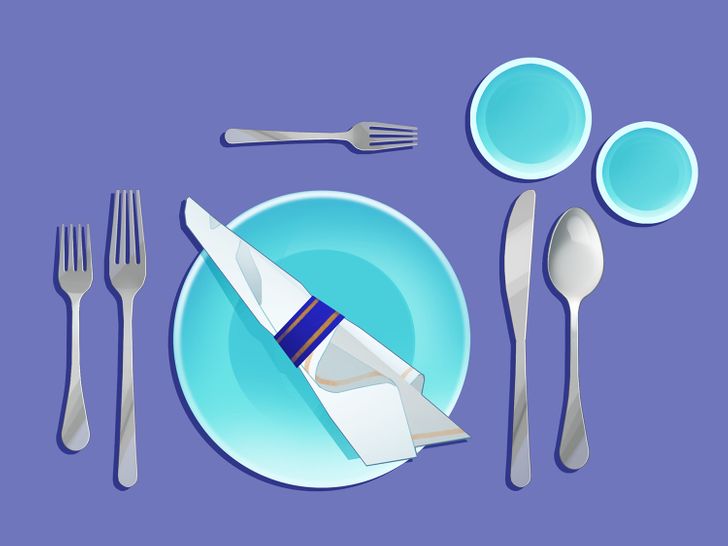
Casual dining is simple but functional. It covers many different dining situations.
- Forks are placed on the left side of the plate while knive(s) and spoon(s) are on the right.
- The water glass goes directly above the knife and to the right you’ll have a cup for other drinks.
- The dessert fork or spoon goes above the plate.
2. Semi-formal dining
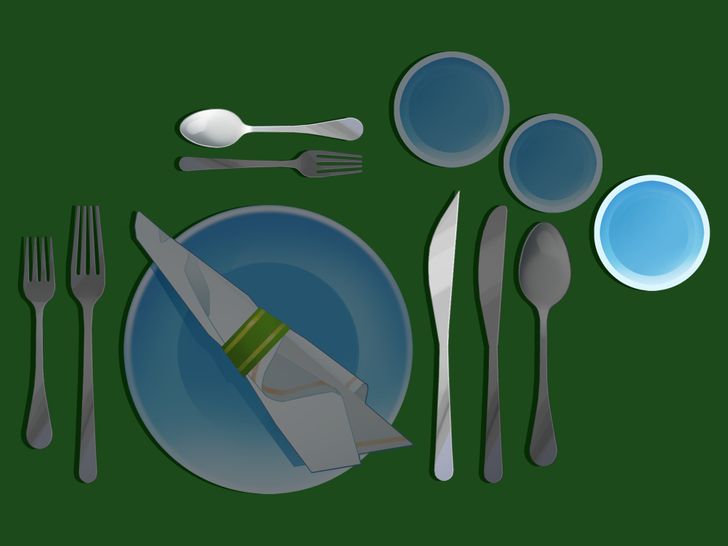
Semi-formal dining is fairly similar to casual dining with some exceptions.
- Here you’ll have another knife closest to the plate. It’s often a sharper knife meant to cut steak.
- In this setting, you’ll most likely have both a spoon and a fork for dessert.
- It’s also common to have 2 additional cups for drinks instead of just one.
3. Formal dining
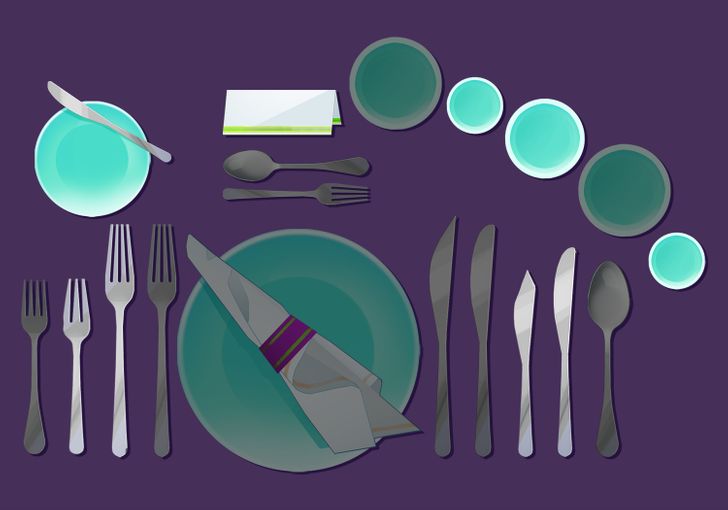
Finally, formal dining is the fanciest setting you’ll find.
- It comes with 4 forks, from left to right: salad, fish, main (1), main (2).
- Above the forks, you’ll see a bread plate and a butter knife.
- Above the dessert fork and spoon, there’s often a guest’s escort card.
- To the right of the plate there are 4 knives: a steak knife, a main knife, a fish knife, a salad knife and a soup spoon.
- Next to the water glass, you’ll have 4 cups for drinks instead of 2.
D. The language of the cutlery on the table
Many people are unaware that in certain settings, cutlery can actually be used to communicate with the waiter, the host, or the person that’s looking after your food during a dinner party. This is sometimes known as the language of cutlery.
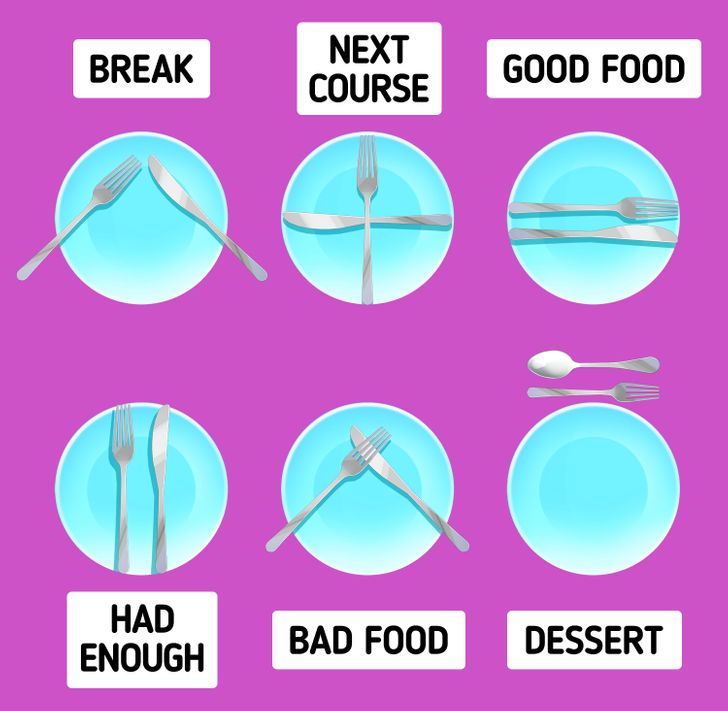
Some of the most common ways of using cutlery to communicate are:
- Placing your fork and knife in the center of your plate with the tips facing each other forming an inverted (V). This means you’re taking a break.
- Placing your knife and fork to form the shape of a cross, with the fork facing up and the knife to the left. It means you have finished eating a course, and you are ready for the next one.
- Positioning your cutlery pointing to the right. You’ll then indicate to the staff that the food has been to your liking.
- Placing the knife and fork straight up and in the center of the plate. You’re implying that you’re finished and that the plate can be removed.
- Using the same position as when you’re taking a break, but you introduce the tip of the knife between the teeth of the fork. You’ll indicate you didn’t like the food.
- Finally, for dessert, you will find that the cutlery is situated above the plate.